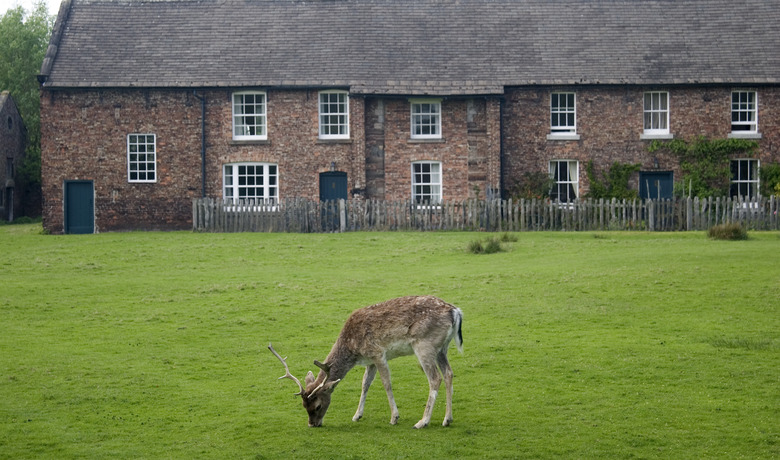How To Scare Deer Away
The hesitant, halting steps of deer as they slip into a garden, one by one, during the dim hours of dusk and dawn are often the precursor of another raid on the garden. Even though deer are easily spooked, it's challenging to keep them away from a yard's delectable flowers, shrubs and vegetables after they become accustomed to human activity. Gardeners use a variety of methods to scare deer away from their beloved vegetation.
Use Motion-Activated Devices
Use Motion-Activated Devices
A variety of motion-activated devices — from sprinklers that soak a trespassing deer with water to high-pitched whistles and bright lights that illuminate the area — are intended to frighten deer without hurting them. Although these devices have some success, deer may eventually learn that they are not actually in danger and return to eat the site's lush vegetation.
Try Smelly Solutions
Try Smelly Solutions
Because deer have a highly developed sense of smell and tend to avoid plants that taste bad to them, gardeners use a variety of commercial and homemade smelly concoctions to discourage deer incursions. Deer feeding range is at ground level to approximately 6 feet above and this is the area where any type of repellent should be placed for it to be effective. Among the common solutions are sulfur-scented products, which have the odor of rotten eggs, highly scented bars of soap and predator urine. Spray repellents need to be reapplied after rain.
Human hair may frighten deer unaccustomed to people; however, deer adjust quickly to human encroachment into their habitat. Some effective scents that deter deer is urine from both native and exotic deer predators, such as coyote, wolf, lion and tiger. When using a predator scent, soak a cloth in the product and place inside a plastic container that has holes punched in it so the odor is released. Replace when the odor is no longer present.
Make Sudden Random Movements
Make Sudden Random Movements
A simple and somewhat effective method of scaring deer is to tie ribbons or windsocks along the property fence line or on a wire suspended on posts around the garden. The wind makes the ribbons and windsocks flutter in random movements. Shiny, mirror-like ribbons add random reflections as they sparkle in sunlight, catching the deer's attention and making them afraid to pass the flapping material that they think is a threat.
Adopt a Vocal Furry Friend
Adopt a Vocal Furry Friend
A barking dog running loose inside a fenced garden or yard frightens deer and keeps them out of that site. A small, noisy dog is as effective as a large dog in scaring deer, as long as the dog is actually inside the entire fenced area. Deer quickly learn that a dog in only a dog run that is alongside a garden or yard is not dangerous, and the deer will ignore the dog's barking while they eat plants nearby. Although a dog loose in a garden or yard is an effective deer deterrent, its barking may annoy neighbors and wake them (and you) up at night. Also, having an unleashed dog in a non-fenced area may put you at risk of a fine in the neighborhood where you live. Some breeds, such as small terriers, aggressively bark at all intruders and tend to dig, which, like deer, damages plantings.
More Tips to Keep Deer Away
More Tips to Keep Deer Away
If the deer in your yard don't scare as easily as you'd like, try fencing them out. But just make sure the fence is high enough so they can't jump over it. You can also try wrapping soap bars or hair in a covering of burlap or cheesecloth and hanging these deterrents on stakes located around the garden and where you want to repel deer. You will need to replace with new ones in approximately three weeks to one month, but their effectiveness is limited at best.
